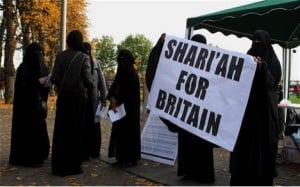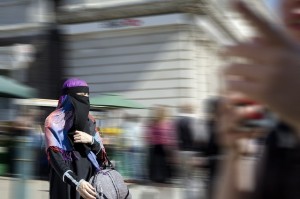In a recent article, Nesrine Malik discusses the scrutiny placed upon the wives of Arab leaders in relation to revolution in the Arab world. Designer-clad extensions of their husbands’ regimes, Malik points out the focus placed upon their lifestyles. Mostly, she draws upon the example of Tunisia’s Leila Ben Ali, Egypt’s Suzanne Mubarak, and Jordan’s Queen Rania. Critiqued as symbols of the greedy and corrupt antics of their husbands, they also represent some of the confusion about what a progressive Arab and Muslim woman actually looks like.

Leila Ben Ali, Tunisia’s former first lady, played a rather large role in some of the most corrupt elements of her husband’s regime. While serving as the president of the Arab Women’s Organization, her family’s name became synonymous with rampant greed and corruption in Tunisia. Suzanne Mubarak was recognized by UNICEF, the Fulbright organization, UNESCO, and even the World Health Organization for her work in children’s health, shared in her husband’s estimated $70 billion fortune. While Mubarak was more widely celebrated for her contributions to women’s empowerment and development, Ben Ali still received the odd award for her supposed contributions.
Apart from Ben Ali, many wives of Arab leaders were celebrated abroad, as immaculate ambassadors of their nations, and also as ambassadors for a progressive vision of Islam. Western-educated, clad in designer clothing, many have been involved in Western organizations. Queen Rania of Jordan is the most prominent example of this; she has been heavily involved with UNICEF, but makes constant appearances at fashion shows and has recently come under fire for a lavish 40th birthday party. While she advocates for education and fighting against poverty, Jordan remains one of the poorest nations in the world. While considered progressive and powerful abroad, Queen Rania disrupted stereotypes of Muslim women within the Arab world.
This conversation is an important opportunity to contest the way in which we define modernity, and ultimately creating a dialogue about the way that we define a “progressive Muslim woman.” In actuality, wearing “Western clothes,” or attending a prestigious university abroad is not the measure of what it means to represent a progressive or feminist version of Islam. There is a tendency to associate such qualities with being able to shed “archaic” symbols of Islam, such as the hijab or being hidden from the public sphere.
However, in actuality, the role of a first lady is based upon very specific gender roles: being the symbol of motherhood and morality. It is hardly a platform for promoting women’s rights. Yet many of these women have been tied with women’s empowerment initiatives. It is important to remember the role of a first lady. The first lady is not the head of state, and in actuality, does not have much control over the state, even though Ben Ali seemed to break from this tradition. It is common for first ladies to be involved with trite and often times inoffensive causes, and perhaps their role is heavily reliant on “looking good.”
This discussion of first ladies is representative of a much larger discussion and ultimately misunderstanding of the Arab world. While critiquing these figures is important, factoring in the actual role of a first lady is crucial to such a discussion. While such a conversation can involve thinly veiled sexism, that this is an opportunity to redefine what it means to be a progressive Muslim woman.













